 Photo by Sven Damerow, CC BY-SA 4.0.
Photo by Sven Damerow, CC BY-SA 4.0.
Warm rays of sunlight that pour through clouds on a snowy mountain. Kayak passing by an enormously still glacier. Two owls staring at you carefully and suspiciously.
These are just a few of the breathtaking photographs winners from the international Wiki Loves Earth competition, whose results were announced today.
The overall winner, seen above, shows a banded demoiselle hovering near a dandelion’s seedhead at Gülper See lake in Brandenburg, Germany. The selection committee praised it for its composition, sharpness, and colors; it “would look great in a book about insects,” one member said, while another called out the extraordinary detail visible on the damselfly’s wings.
Organized since 2013, this year’s rendition of Wiki Loves Earth inspired over 95,000 photo uploads from thirty-seven countries, including at least one from every continent in the world (except Antarctica). All of the entries were judged by juries organized on the national level. The winners from these were forwarded to an international jury of experts, which selected the images that you see above and below.
The contest’s second- through sixteenth-place images follow.
 Second place. Photo by Aboubakrhadnine, CC BY-SA 4.0.
Second place. Photo by Aboubakrhadnine, CC BY-SA 4.0.
A group of people walking through Hoggar National Park, Assekrem, Tamanrasset, Algeria. The members of the contest’s international journey called out this photo’s “magnificent color,” adding that capturing “the line of people versus the line of rock” was “very powerful.” This location was also featured in the fourth-place winners in Wiki Loves Earth 2018.

Third place. Photo by Mykhailo Remeniuk, CC BY-SA 4.0.
A hillside full of flowers in Ukraine’s Carpathian National Park. One jury member stated that this was a “classical” image, while another pointed out that the positioning of the flowers leads a viewer’s eyes straight into the mountains behind.

Fourth place. Photo by Dmytro Balkhovitin, CC BY-SA 4.0.
According to Wikipedia, the mountain Ai-Petri is “is one of the windiest places in Crimea.” On this day, though, the wind could not blow away a swath of low-lying clouds, which gave photographer Dmytro Balkhovitin the perfect opportunity to capture this dawn-lit image. The jury was effusive in their praise for this image, with one calling it “magical,” and another marveling at the difficulty involved in getting to this particular location.

Fifth place. Photo by Andreas Loukakis, CC BY-SA 4.0.
This is the formidable exit from Ha Gorge, a fissure that reaches a depth of about a thousand meters, or over three thousand feet, making it one of the largest in the world. It’s located on Crete, an island off the south coast of Greece.
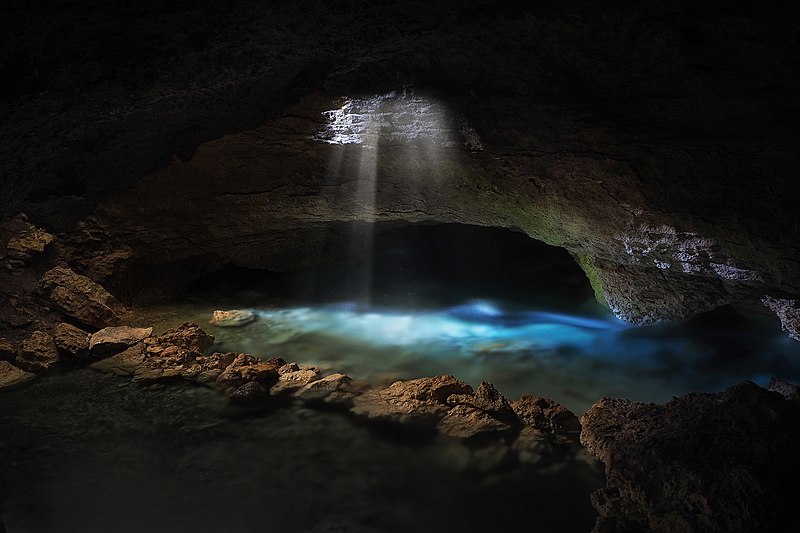
Sixth place. Photo by Glenn Palacio, CC BY-SA 4.0.
The Pulangi River is the fifth-largest river in the Philippines (and drains into the second largest). Here, though, you can barely see its size in this dimly lit underground cavern, named “Blue Water Cave” for reasons that this photo makes crystal clear.

Seventh place. Photo by Abdul Momin (Abdulmominbd), CC BY-SA 4.0.
The Ratargul Swamp Forest is the only flooded forest in Bangladesh, and these boats are likely used to bring tourists in to view it.

Eighth place. Photo by Pablo A. Cumillaf, CC BY-SA 4.0.
The Grey Glacier is located in southern Chile. In 1996, it could boast of being about 270 square kilometers in size (approximately 100 miles), but it has shrunk in the years since then, including one major split in 2017. One jury member praised how this photographer utilized the large “empty spaces.”
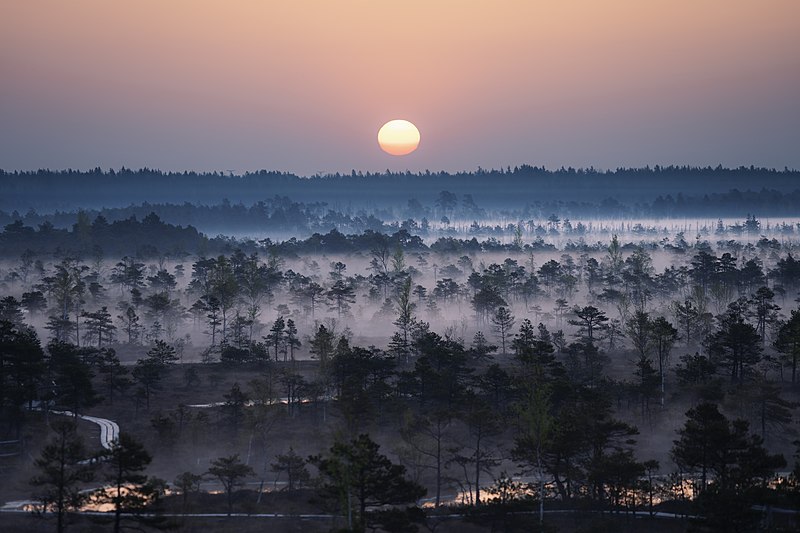
Ninth place. Photo by Volodya Voronin (VolodyaVoronin), CC BY-SA 4.0.
Looking like something out of Star Wars, this foggy morning at Ķemeri National Park in Latvia helps showcase the area’s bogs and forests, as well as the man-made infrastructure that allows tourists to access it. One jury member commented that this photograph featured “a lovely mix of misty subdued colours with natural and man-made objects—making this a thought-provoking piece of art and not just a picture.”
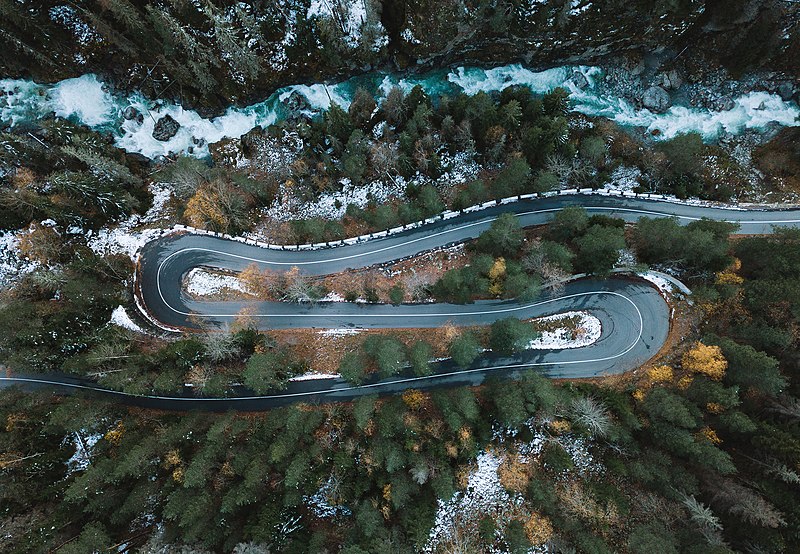
Tenth place. Photo by Andrey Belavin (Ted.ns), CC BY-SA 4.0.
Two features dominate this drone-captured photo of Russia’s Teberda Nature Reserve: a furious river in the upper third, and the road’s switchbacks in the bottom two-thirds. One teasing comment from the jury suggested that this image could have benefited from a passing car—”perhaps a red Ferrari or a cattle truck on the first curve?”, they asked with an accompanying smile.

Eleventh place. Photo by Vladimir Voychuk, CC BY-SA 4.0.
Ostensibly, the subject of this photo is the gnarled old juniper tree located in the Zakaznik Novyi Svit nature reserve in Crimea. What brings this photo over the top, however, was the inclusion of the Milky Way in the background, complete with a shooting star or satellite in the upper central portion.
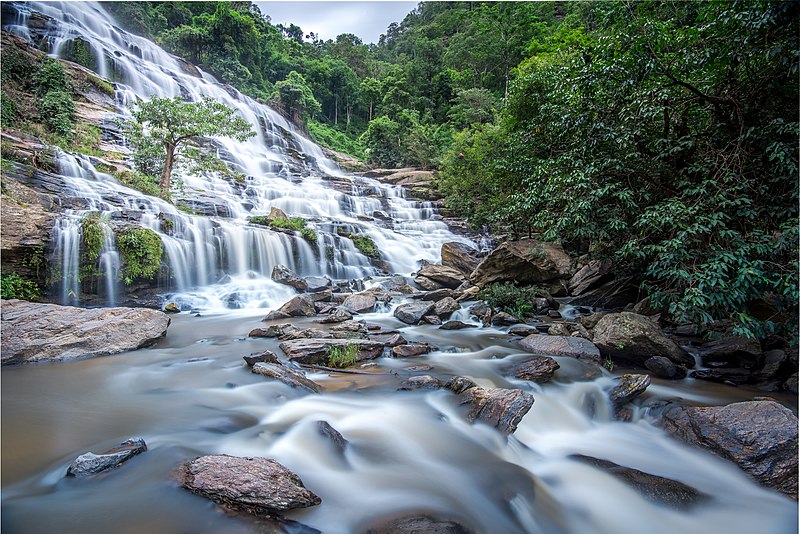
Twelfth place. Photo by Janepop Atirattanachai (BerryJ), CC BY-SA 4.0.
Doi Inthanon National Park is named for Thailand’s largest mountain, and the scene captured here shows water flowing down that mountain. This is not this photographer’s first winning photos in a contest like this; Atirattanachai previously won first and ninth place in the 2017 Wiki Loves Monuments photo competition. This time around, the jury commended Atirattanachai for this “well thought out and executed piece of art.”

Thirteenth place. Photo by Volodymyr Burdiak (Byrdyak), CC BY-SA 4.0.
Surprise! Two long-eared owls are staring at the photographer who may have just disturbed them but managed to snap this spontaneous capture nonetheless. “Slightly comical,” said one jury member.

Fourteenth place. Photo by Senthi Aathavan Senthilverl, CC BY-SA 4.0.
The toque macaque baby seen here is very aware of the photograph and their camera. However, according to the photographer, this adorable scene has a dark side. “Nature always belongs to those who nurture, care and protect it,” Senthilverl said. “But the humans have forcefully claimed it theirs and are on a path of destruction: destroying jungles, waterways and evicting the rightful owners, the wild animals. The Toque macaque (Macaca sinica) loves to traverse on trees and to be as one with the nature. But this click depicts their current plight. It was heartbreaking to see the mother with her child foraging on the hard ground at Katagamuwa Sanctuary – Sri Lanka.”
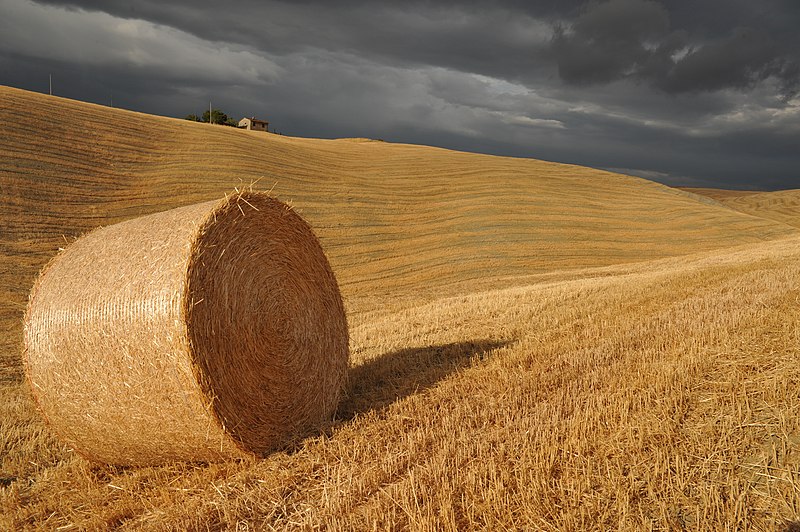
Fifteenth-sixteenth place. Photo by JP Vets, CC BY-SA 4.0.
This solitary straw bale was captured in Val d’Orcia, Tuscany, Italy, a UNESCO World Heritage Site which has been the frequent subject of art ranging from Renaissance paintings to the film Gladiator. The jury praised the image for its “great juxtaposition of textures, colours and hues”.

Fifteenth-sixteenth place. Photo by 陳李銜 (Wargash107), CC BY-SA 4.0.
These stalactite caves in Taiwan’s Shoushan National Park are beautifully backlit by the sun peeking in through the opening at the top. One jury member wrote that they particularly enjoyed that the sunlight fell upon the young plant growing in the center of the image.
If you want to find out more about the jury’s evaluation and commentary, please see this year’s jury report in low and high resolution.
This post uses text from the WMF blog; the original text is attributed under a a Creative Commons Attribution-ShareAlike 3.0 Unported license..

Photos of fourteenth and seventh places are my favorites
Fourth. Eleventh and Fifteenth places should have been way up there in the top 3 in my reckoning.
Thanks for this amazing display of earth’s beauty!
Stunning, beautiful photography!!!